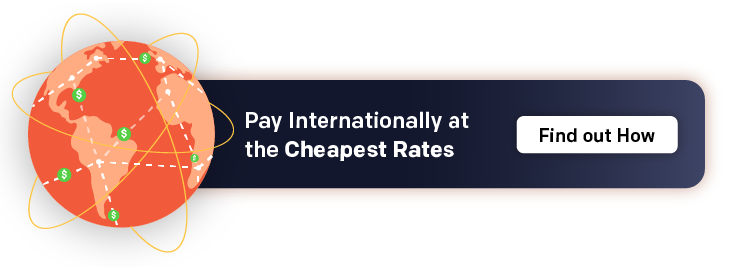Sure, international trade isn’t anything new. But its recent growth as accelerated by technology is nothing short of remarkable. Now, anyone can easily do business with suppliers and customers worldwide.
But, there are still a few systems in place that any business owner should master. Local transactions are pretty straightforward. International transactions, however, have to jump through a few more hoops.
It’s essential to learn the ins and outs of international supplier payments. This way, you can maintain good relationships with high-quality suppliers. Your business can then continue to provide top-notch products and services.
Choosing International Payment Methods
International business transactions can still cost a significant amount of resources, which can be a huge deterrent, especially for small businesses.
The most common method for international transactions is through bank wire transfers. However, banks do charge hefty fees for overseas payments.
Exchange rates are also an essential factor to consider. You will most probably have to pay in your supplier’s currency. Due to fluctuations in exchange rates, you might end up paying more than you have to.
Your supplier is an essential part of your production, so paying them will be a recurring expense. It’s always wise to look for the best rates to avoid overspending. Finding a more affordable option than bank transfers can help you save a lot of money.
Whether you have an ongoing relationship with an overseas vendor or are just beginning to accept international payments, you want a payment channel that offers convenience and cost savings. Check out Spenmo today.

Account Details You Need for International Payment
Before sending out your payment, there are a few details you need to secure. These may differ depending on your bank of choice. It’s always best to ask beforehand. To start, here are the basic banking details you should ask your supplier.
Bank Account Number/IBAN code
A bank account number is a series of whole digits issued by a bank upon opening an account. It is unique per account registered.
An international bank account number (IBAN) is a standard worldwide numbering system. It serves to identify individual bank accounts for international transactions. It usually starts with a two-digit country code, followed by a string of letters and numbers.
An IBAN doesn’t replace a bank’s numbering system. Instead, it only helps to verify international transactions as additional information. Some countries require an IBAN, such as those in Europe. Others, like Singapore, only ask for a bank account number.
SWIFT Code/BIC
SWIFT codes or BICs are essential for bank transfers, especially international transactions. They ensure that the sender connects with the right bank among thousands.
These codes are alphanumeric strings that identify a specific branch of a bank. It is a Business Identifier Code (BIC) approved by the International Organization for Standardization (ISO).
SWIFT stands for the Society for Worldwide Interbank Financial Telecommunication. It fosters communication among financial institutions all over the world.
Branch No./Bank Address
Branch numbers are unique to each branch of a particular bank. You can use it or the bank’s address to specify which bank branch you transact with.
Routing No./ABA/Sort/BSB code (international, if applicable)
These numbers identify state-chartered banking institutions for domestic or international transactions.
These terms may differ depending on the country or area of the bank’s origin, but they serve the same purpose. For example, ABA codes are for members of the American Bankers Association. Sort codes are specific to UK banks, etc.
What You Need to Look for in an International Payment Provider
It’s good that traditional banks aren’t your only option anymore. It helps to have more options, especially for more costly services. Foreign transactions are one of them.
When choosing an international payment provider, you need to consider several factors. These can influence the cost and quality of your payment solutions.
Currencies
First, you need to consider the currencies you need to work with. These will be your local currency and your foreign suppliers’ home currency.
Most providers carry common currencies like USD. However, some providers do not have different currencies at all times especially if they are in low demand.
It’s best to inquire whether a provider supports your foreign suppliers’ currency beforehand. This practice ensures a smoother transaction for both parties.
Exchange rates
Exchange rates can vary daily depending on economic activity. There is no foolproof way of predicting them yet, but your timing does matter. Depending on the day’s rates, you could pay less or more in your currency to match your foreign suppliers’ currency.
Fees
All foreign exchange transactions have additional fees. These often cover any processing costs for international transfers. Still, some banks and providers have higher rates than others. It’s best to shop around and inquire where the extra charges are lowest.
Since you’ll be making these transfers regularly, the small things will add up. Making cost-effective decisions from the get-go will be easier on the pocket in the long run.
Payment Methods
Advances in technology have awarded us a wide variety of payment methods. Aside from cash, you should be able to pay through credit, debit, and other electronic methods. Flexibility is important, especially during emergencies.
Aside from the method, you should also settle your payment schedule. Some providers only accept one-time payments, while others welcome recurring payment plans.
Speed
Speed and efficiency are critical factors when choosing a payment provider. Most payables have set deadlines, and you don’t want to keep your suppliers waiting.
International transfers usually take more time than local transactions. Still, you or your foreign supplier shouldn’t have to wait too long. Same-day transfers should be the goal.
Automation
A good provider should be capable of basic accounting automation. Your provider should automatically reflect each transaction onto your records.
Having an automated system minimises the need for manual data entry. This is fine in small numbers, but the more transactions you have, the more difficult this will be. Automating menial tasks helps your accountants focus on their more important duties.